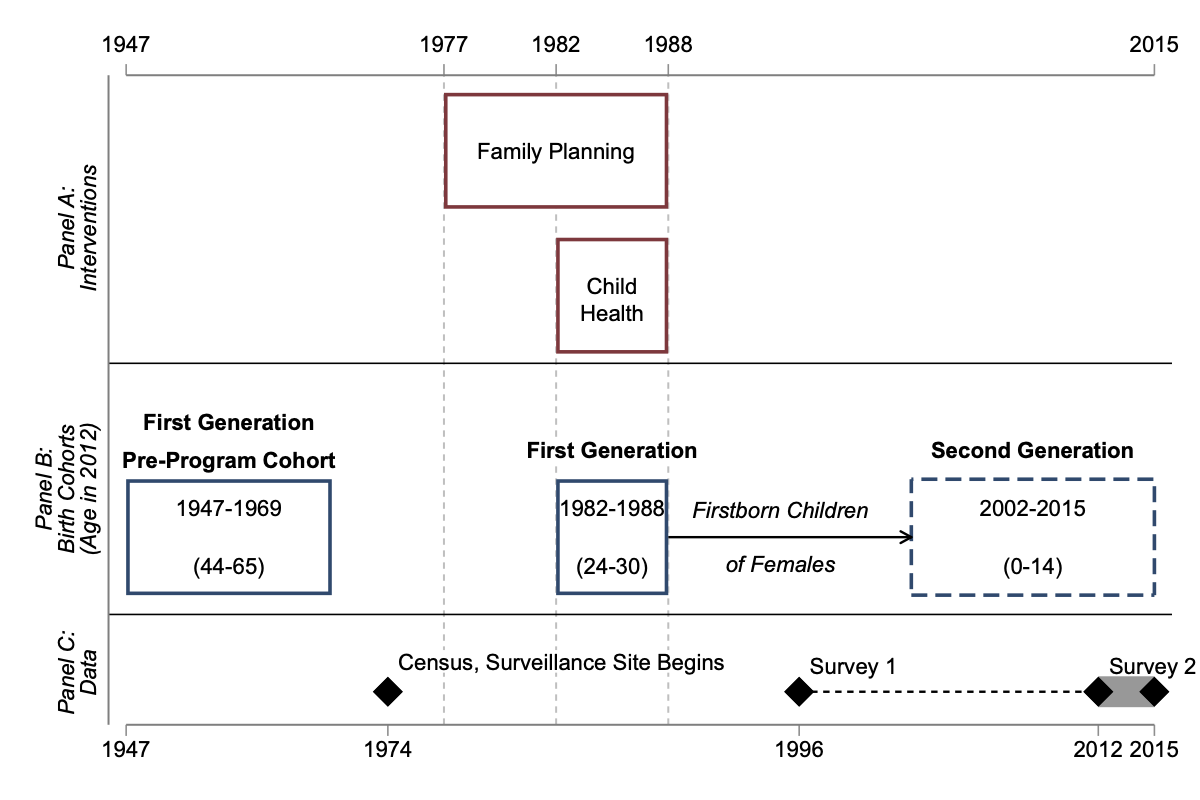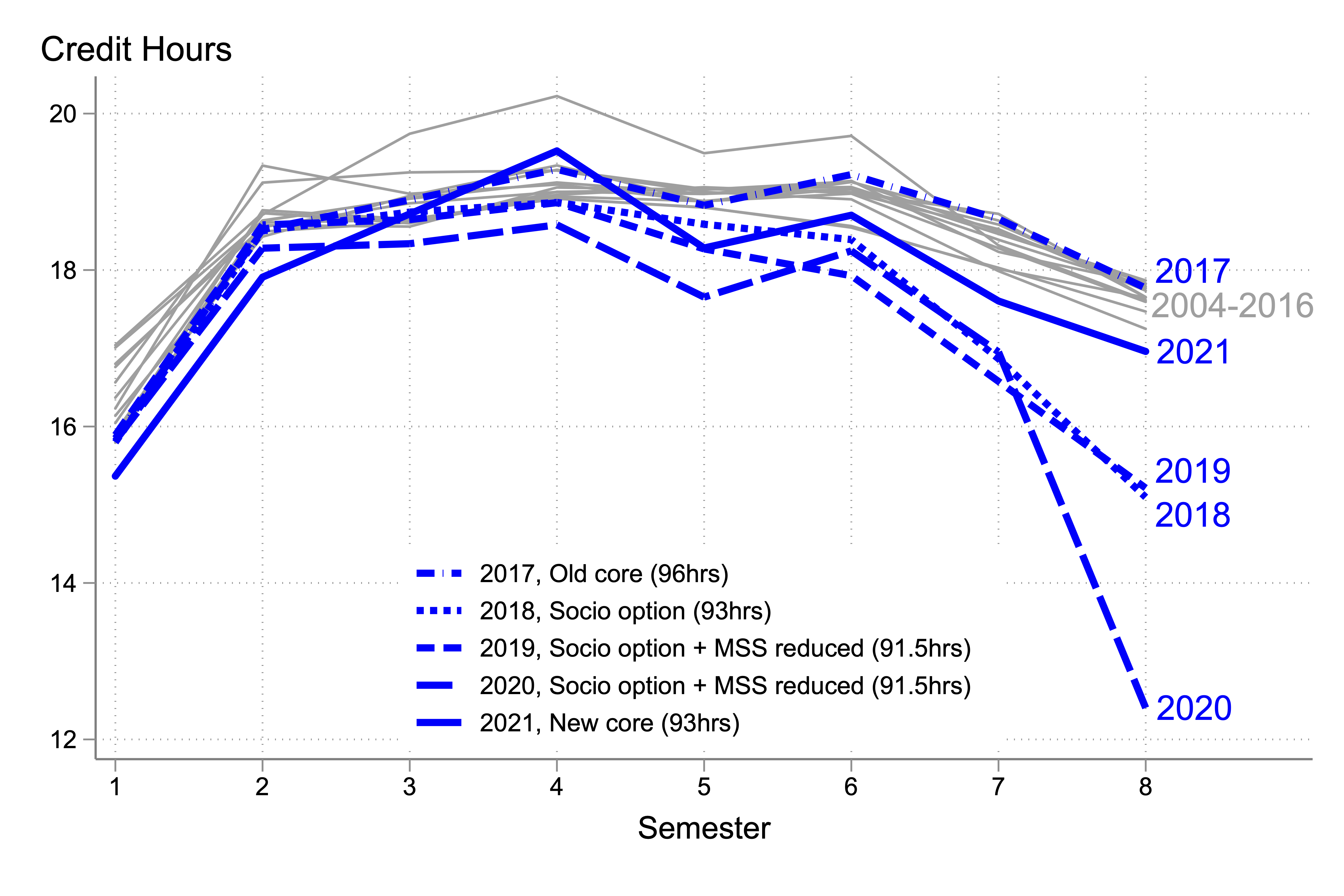Publications
Working Papers
Abstract:
We demonstrate that improving the early childhood health environment has long-term and intergenerational effects on human capital with important distributional effects in Bangladesh. Adults who were eligible as children for health promoting interventions exhibit increased height, reduced short stature, and achieved higher levels of educational attainment. Findings are largest for individuals with the lowest pre-program health endowment, reducing inequality in human capital. Intergenerational effects reveal daughters experienced increased height, reduced stunting, and improved cognitive functioning. These effects are correlated with mother's income generation activities. Failing to consider these distributional and intergenerational effects leads to underinvestment in children.
Abstract:
The time costs of academic credit hours are not well understood due to data limitations and endogenous course selection. Using administrative computer logs of campus departures linked to academic records, we estimate the effect of additional credit hours on time allocated to leisure off-campus by students' at the U.S. Air Force Academy using two natural experiments. First, we exploit significant administrative barriers to schedule changes and find that conditional on student fixed effects each additional credit hour reduces leisure by 7 hours per semester. Second, we leverage significant and unexpected changes to graduation requirements and find the effect may exceed 17 leisure hours per credit. These reductions in leisure time account for 17-50\% of the time cost imposed by a modal 3 credit course. Performance falls in academics, athletics, and military duties, suggesting students struggle to keep up with higher course loads even after reducing leisure time.
Abstract:
Career choice is an important determinant of earnings, non-wage benefits, and many other lifestyle features, but the determinants of that choice are not well understood. This paper leverages administrative data on United States Air Force Academy graduates to estimate the effect of occupational wages on career field preferences. Students commission into the United States Air Force and earn mostly similar wages despite working in a wide variety of different fields. After leaving military service, however, these fields offer very different opportunities in the civilian workforce. We find students are more likely to prefer Air Force career fields when similar civilian career fields offer higher wages. This provides unique evidence on the importance of wages on career field choices for college graduates, and the potential importance of wage information for helping college graduates find better career field matches.
Abstract:
Child marriage has declined yet remains prevalent, especially in low- and middle-income countries. We show this practice is perpetuated in part by intergenerational transmission. Using mother's age of menarche as an instrument for child marriage, having a child married mother increases the likelihood her daughter is also child married by 15 percentage points. Economic stress rather than gender norms likely explains the mechanism for transmission.

